To find out more...
The right size of zucchini
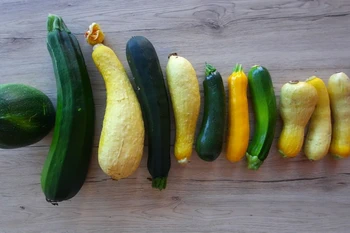
But which ones to choose? Here are a few tips.
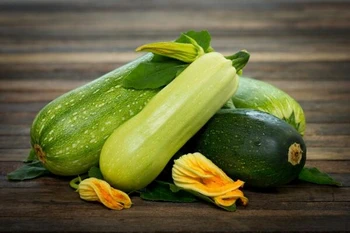
From the outset, we have to admit that zucchini is a very pleasant summer vegetable, but it doesn't have a very pronounced taste.
But in its early stages, when it's not too big, the taste is still there, with a delicious crunch.
The problem, so to speak, is that both the taste and the crunchiness will diminish, while the size will increase.
Put another way, the larger the zucchini, the less flavor it has, and the greater the volume of its center and seeds in relation to its flesh.
So what's the "right" size?
A great chef, Alain Dutournier, used to say that beyond 15 cm (6 inches), a zucchini is of no interest (gustatory).
Here are a few tips to help you make your choice:
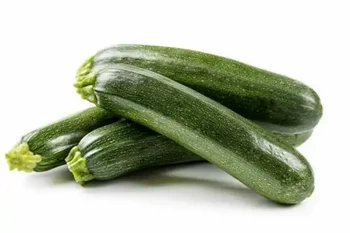
The smaller the zucchini, the crunchier and tastier it is, so try to limit yourself to a maximum size of 15-20 cm.
There are 2 exceptions, however: 1) for stuffed zucchinis, you can go (a little) beyond this size, to facilitate filling with the stuffing, and 2) for a soup.
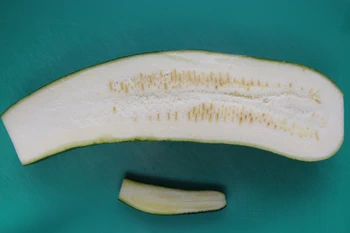
The larger the zucchini, the more seeds you'll need to remove from the center.
When the zucchini is small, you can't feel them, but in a large one, they have to be removed because they're too big/hard.
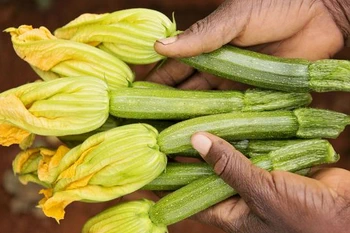
Even very small zucchinis, as big as your finger, are interesting.
A delight to bite into, dipped in a lemon mayonnaise for example.
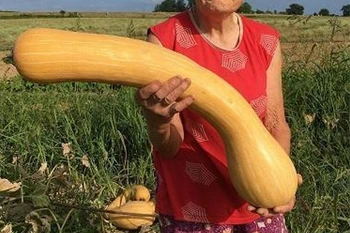
Unfortunately, many amateur gardeners are unaware of this taste/size ratio, and allow their zucchinis to grow to impressive sizes, thinking they're doing the right thing...
To sum up: the smaller the zucchini, the better. Ideally, the maximum size is around 15-20 cm.
Butter vs. grease
We often read in a recipe where a pastry is put into a mould that, just before pouring, the mould should be buttered or greased. But what's the difference between these 2 terms?December 1st 20251,0395
Getting out of the fridge early
Very often when you're cooking, you need to take food or preparations out of the fridge, to use them in the recipe in progress. There's nothing tricky about this: you just take them out of the fridge and use them, usually immediately, in the recipe. But is this really a good method?November 24th 20251,1435
Who's making the croissants?
When you look at a bakery from the outside, you naturally think that in the bakery, the bakers make the bread, and in the laboratory, the pastry chefs make the cakes. It's very often like that, with each of these professions having quite different ways of working, but sometimes there's also one...November 23th 20251,032
Oven height
When we put a dish or cake in the oven, we naturally tend to put it on the middle shelf, and that's what we usually do. But in some cases, this position and height can be a little tricky, so let's find out why.October 8th 20252,8095
The importance of sieving
In recipes that use a fine powder (flour, powdered sugar, etc.), you'll often see the advice to sift before using it. To sift is to pass the powder in question through a sieve (a very fine strainer) before incorporating it into your recipe. It's often advice, but is it really useful?September 3rd 20257,5663
Candied fruits: don't get ripped off
Do you like candied fruit? You might like to nibble a handful or add it to a recipe, like a classic fruit cake or delicious Italian specialities like panettone or sicilian epiphany pie.June 21th 201767 K 24.2
What is the difference between bakery and patisserie?
This is a question that you may well have asked yourself and which I will attempt to answer. In France the two trades of "boulangerie" (bakery) and "pâtisserie" (patisserie and confectionery) have always been quite distinct, but where exactly do the boundaries lie? .February 7th 2017134 K 14.1
Kitchen ovens
You certainly have one in your kitchen, an oven, the essential tool for all kinds of cooking, whether in the kitchen of course, but also in pastry, bakery, pizza, and many others. Here is some information on its structure and operation.May 16th 202034 K4.4
The return of the "Norman hole"
You maybe know the "trou normand", this old gastronomic custom typically French which consists in taking a (small) glass of calvados, generally between the last course and the dessert? It's something that seems a bit anachronistic nowadays, having a glass of an alcohol of more than 60° in the...December 18th 202115 K4.8
Soup vs. potage
It's true that we're finally coming out of winter as I write these lines, and that we'll all be making, no doubt, a little less soup and potages, but even if it's out of season, it really is a simple and delicious dish, which is one of the always easy answers to "What's for dinner this (Sunday)...April 9th 202211 K









